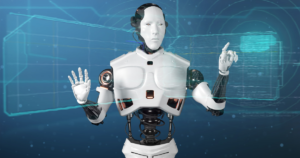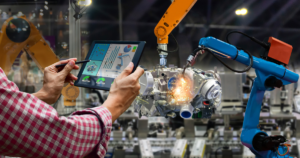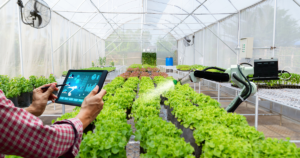
The world of robotics is advancing at a breakneck pace, promising to revolutionize industries and redefine the way we work. From healthcare to manufacturing, robotics is poised to create a future where humans and machines collaborate seamlessly. Here are five reasons why robotics will transform the workforce by 2030.
1. Automation of Repetitive Tasks
Robots excel at performing repetitive, mundane tasks with precision and consistency. By 2030, industries like manufacturing, logistics, and retail will heavily rely on robots to handle such activities, freeing up human workers for more complex, creative, and decision-driven roles. According to a McKinsey report, automation could increase productivity growth globally by 0.8% to 1.4% annually.
Key Example:
Amazon’s warehouses already use over 520,000 robots for sorting, picking, and packaging—reducing delivery times and improving efficiency.
2. Enhancement of Human Productivity
Rather than replacing humans, robotics will augment human capabilities. Collaborative robots, or “cobots,” are designed to work alongside humans, enhancing productivity and safety. By assisting with tasks such as lifting heavy objects or performing intricate surgeries, cobots can significantly reduce workplace injuries and improve outcomes.
Key Insight:
The global cobot market is projected to grow from $1.2 billion in 2021 to $10.5 billion by 2030, demonstrating their rising importance across sectors.
3. Reshaping Healthcare and Elder Care
Robotics is set to revolutionize healthcare by improving precision in surgeries, automating diagnostics, and providing critical support in elder care. By 2030, surgical robots, telepresence systems, and robotic caregivers will play a pivotal role in addressing global healthcare challenges, including aging populations.
Notable Data:
The medical robots market is expected to reach $43 billion by 2030, driven by advancements in AI and robotic technologies.
4. Fostering New Job Opportunities
While robotics may replace certain roles, it will also create new job categories. Demand for robotics engineers, AI specialists, and maintenance technicians will surge, requiring a workforce skilled in programming, systems integration, and robotics operation.
Key Statistic:
The World Economic Forum predicts that by 2025, robotics and automation could create 97 million new roles globally, offsetting job losses from automation.
5. Driving Sustainability
Robots can play a significant role in reducing waste and optimizing resource use. From precision agriculture that minimizes water usage to automated recycling systems, robotics will be integral to creating a more sustainable future. These innovations not only cut costs but also help meet global sustainability goals.
Real-World Impact:
Agricultural robots are expected to reduce fertilizer and pesticide use by up to 30%, contributing to eco-friendly farming practices.
Preparing for the Robotic Revolution
As robotics continues to evolve, individuals and organizations must adapt to the changing landscape. Investing in robotics education, upskilling, and embracing innovative technologies will be key to thriving in the workforce of the future.
The Indian Institute of Robotics is at the forefront of this transformation, offering cutting-edge training programs to prepare the next generation of innovators and leaders in robotics.
Visit Indian Institute of Robotics to learn how you can be part of this revolution.
Robotics is no longer a concept of the future; it is the present, rapidly shaping industries and redefining possibilities. By 2030, the integration of robotics in the workforce will lead to greater efficiency, innovation, and sustainability. Embrace the robotic revolution and prepare for a future of endless opportunities.
Join the advanced robotics training courses online or offline and learn how to build a robot from scratch. Get circuits diagrams, codes, mechanical components, 2D/ 3D designs, electronics components, data sheets, documents and video lectures to learn from the best. Thousands of students have benefited from this program. Study content is designed and developed by eminent professors and industry experts to meet the industry demands.






